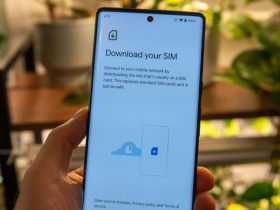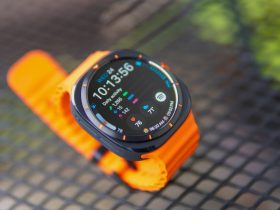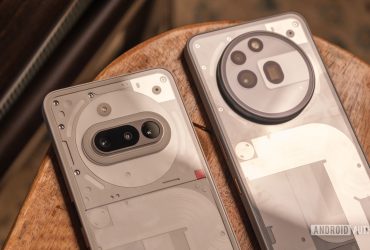
Contents

Joe Maring / Android Authority
When shopping for a new smartwatch, you have a pretty general idea of how much you need to spend to get something of good quality. Whether you’re looking at one of the best smartwatches from Google, Samsung, OnePlus, Garmin, or any other major brand, spending anywhere from $250 to $400 is about the norm.
Then there are the extremes on either end of that range. Samsung showed us what happens when it goes all out and creates the most rugged and feature-rich watch possible. The result was the Galaxy Watch Ultra, and while extremely capable, the $650 price tag is as prohibitive as the watch is powerful. But what about the other end of the spectrum? That’s where a watch like the Amazfit Bip 6 comes into play.
On paper, the Bip 6 seems too good to be true. It has an aluminum design, an AMOLED display, loads of health features, and up to 14 days of battery life — all for just $80. Surely, there must be a catch. I wore the Amazfit Bip 6 for about a couple of weeks to see what that catch was, and as it turns out, there really isn’t one.
Would you buy an $80 smartwatch?
12 votes
Everything the Amazfit Bip 6 gets right

Joe Maring / Android Authority
The Amazfit Bip 6 impressed me as soon as I took it out of its box. I expected an $80 smartwatch to feel cheap and poorly built, but the Bip 6 is anything but. Its aluminum casing is sturdy, the side buttons are satisfying, and the glass over the screen is slightly curved/domed. The Apple Watch-like design isn’t the most original thing I’ve ever seen, but it works. It makes the Bip 6 fairly stylish and comfortable, and the included watch band is great, too.
Even more impressive than the hardware is the display. At $80, I fully anticipated the Bip 6 to have a low-quality, low-resolution screen that I would struggle to see outdoors. But again, Amazfit proved me wrong.

Joe Maring / Android Authority
While it’s obviously not the best smartwatch display I’ve ever seen, it’s still pretty damn good. The AMOLED panel means you get inky deep black and vibrant colors. The 390 x 450 resolution has been plenty sharp and easy to read, while the 2,000 nits of peak brightness has made the screen easily viewable during the first sunny days of spring in Michigan. A good display is one of the most important aspects of any smartwatch, and amazingly, Amazfit delivered in spades. It really shouldn’t have been able to at this price, but it did.
Equally surprising to me has been the software. The Bip 6 runs Amazfit’s own Zepp OS operating system, and in many ways, it’s very similar to Wear OS. From your clock face, you swipe down to see your quick settings, swipe up for your notifications, and swipe left and right to see widgets for things like the weather, your heart rate, daily activity progress, etc.

Joe Maring / Android Authority
Not only is it a familiar UI, but it works well, too. The interface is responsive, apps open quickly, and notifications have been super reliable. I’ve had the Bip 6 paired to a OnePlus 13, and it’s shown me notifications without any delay.
Speaking of daily activity, the Bip 6 has a shocking number of health/fitness features available. Almost everything you could ask for is here, including:
- Daily activity
- Sleep tracking
- Heart rate monitoring
- Heart rate variation (HRV)
- Breathing rate
- Daily readiness score
- Blood oxygen (SpO2)
- Stress monitoring
- Menstrual cycle tracking
- Built-in GPS
For casual use, it’s a more than capable setup. There are a load of workout types you can track, detailed recovery measurements after a tough workout, and even sleep apnea risk detection. For an $80 smartwatch, it’s a pretty unbelievable list of features.
Finally, there’s the battery life — and it’s fantastic. After nearly seven days of use — including daily activity tracking, a few workouts, sleep tracking, and having the always-on display enabled — I still had 15% battery left in the tank. That lines up with the battery life Kaitlyn saw in her full review, and with lighter use, you can almost certainly get over a week out of this thing.
So … what’s the catch?

Joe Maring / Android Authority
That all sounds pretty great, and that’s because it is. The Amazfit Bip 6 is well-made, enjoyable to use, has reliable notifications, and a heap of fitness features. While there’s not one single deal-breaker or issue that ruins the overall package, there are a few things that remind you of the ultra-low $80 price.
Going back to the health/fitness features, while there is a lot available, it doesn’t always work that well in practice. Sometimes, the heart rate sensor lines up very closely with my Apple Watch Ultra 2. Other times, it’s wildly off base. During one strength training workout, the Apple Watch recorded an average heart rate of 155 bpm with a gradual increase throughout the workout. The Bip 6, meanwhile, had a much lower 136 bpm average with dramatic spikes in random places.

Joe Maring / Android Authority
Sleep tracking has also been hit or miss, with the misses being quite significant. On a night when the Apple Watch Ultra 2 recorded 6 hours and 9 minutes of total sleep (including 50 minutes of awake time), the Amazfit Bip 6 thought I slept for just 3 hours and 50 minutes, with a staggering 2 hours and 29 minutes of being awake.
If you’re serious about your health/activity, that probably kills any interest you may have had in the Bip 6. And fair enough! But the Bip 6 isn’t for fitness enthusiasts. If you’re just casually tracking your data and want to push yourself to get more daily steps or to keep a general eye on your metrics, I think you’ll be happy enough.
Beyond the data itself, the Zepp app is also really overwhelming. By default, the top of the app shows your sleep and readiness scores, plus your daily exertion level. As you scroll, you’ll find a food tracker, a widget for your heart health, a step tracker, a stress monitor, and your PAI (Personal Activity Intelligence) score — just to name a few.
I appreciate how much information is here, but Amazfit doesn’t do a particularly good job of explaining what all of these things mean. As I write this, the app says my Mental Recovery score is 30 while my Physical Recovery score is 47. But what do those things mean? Should I be worried about them? How can I improve them? Your guesses are as good as mine.
Outside the health features, there’s also an unmistakable sense that certain features feel incomplete.
For example, every notification you receive shows an “AI Assistant” button below it. Tap this, and the Zepp Flow assistant is supposed to provide more context about the notification in question. But in practice, it doesn’t do anything of value.

Joe Maring / Android Authority
I summoned the assistant to learn more about a Google News notification about “The Last of Us” being renewed for a third season. After asking Zepp Flow for more information, it just read a longer, fluffed-up version of the notification, saying, “The Last of Us has been renewed for a third season. Fans can expect more thrilling episodes soon!’ Thanks, AI — that’s super helpful.
The Zepp app has an option to reorder your “shortcut cards,” which let you see tiny widgets in a vertically scrolling list (not unlike the Smart Stack on the Apple Watch). At the top of mine is something that’s just labeled “NULL,” which, upon further inspection, appears to be the Zepp Flow assistant.
There are a few things that remind you of the ultra-low $80 price.
Kaitlyn also mentioned in her review that GPS tracking isn’t always accurate, and she brings up a good point about third-party apps: there really aren’t any. The Zepp app does have an app store, but it’s extremely limited. If you like having Spotify, Google Home, Gmail, Todoist, or other similar apps on your wrist, you won’t find them here.
This can all leave the Bip 6 feeling unpolished at times, and while it doesn’t make the watch unusable, they are regular reminders that you are, in fact, using an $80 smartwatch.
A truly incredible smartwatch value

Joe Maring / Android Authority
But you know what? For $80, I can look past those reminders. If this were a $200 or $300 smartwatch, then the conversation would be different. But this is $80 we’re talking about. You could buy four Bip 6s for the same price as one Pixel Watch 3 and still have $20 left over. Hell, you could buy eight Bip 6 watches for how much it would cost for a single Galaxy Watch Ultra.
The Amazfit Bip 6 certainly isn’t perfect, and if you have the means to afford a more expensive smartwatch, I’d still recommend getting one. But for folks who don’t want to pony up the cash for a Pixel Watch or Galaxy Watch, it’s pretty incredible that something like this exists; a fully-featured smartwatch for under $100 — and a darn good one at that.
What’s your reaction?
Love0
Sad0
Happy0
Sleepy0
Angry0
Dead0
Wink0










Leave a Reply
View Comments